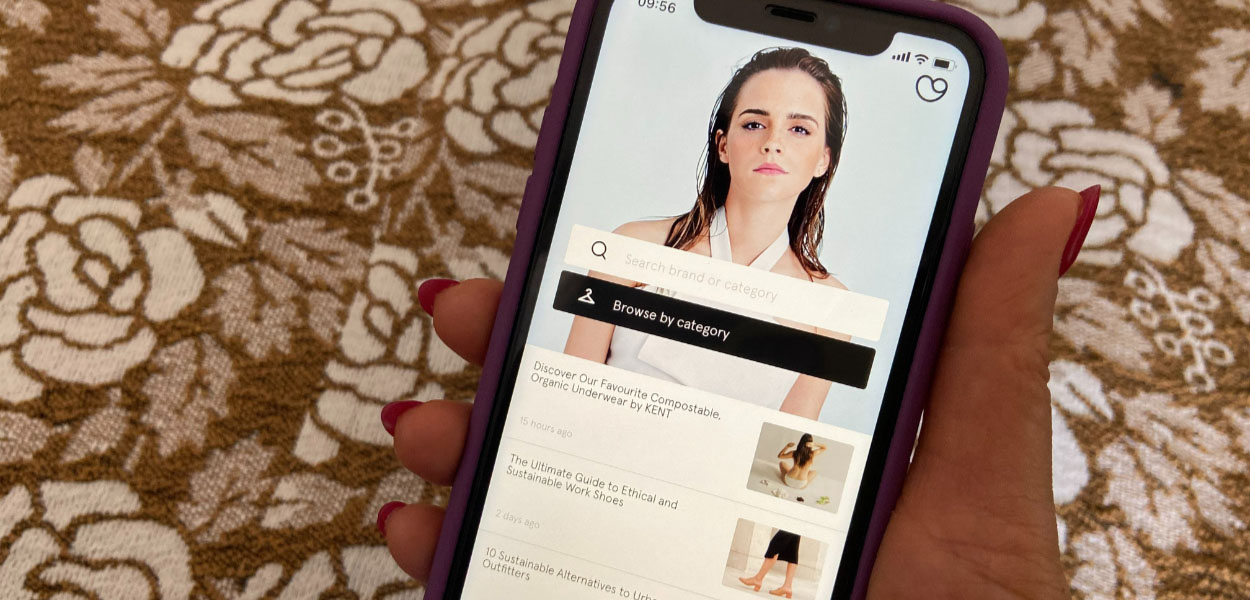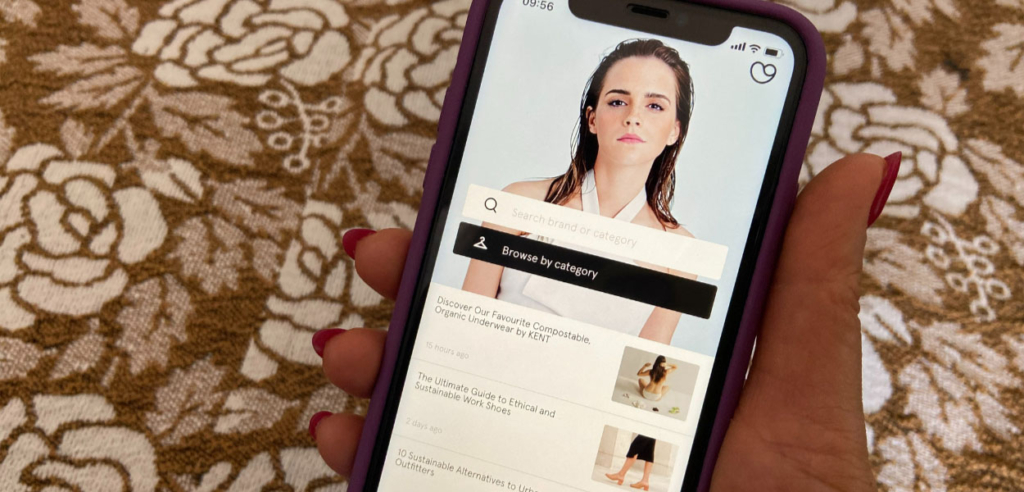Sustainability is not just an option anymore. The fashion industry is slowly working towards more conscious actions. It was thinking about the future of the market that the Good On You App was born.
Good On You is the leading sustainability rating platform for fashion. This app helps to empower consumers to know the impact of brands on the environment, labor, and animals.

This article will give you an insider’s view on getting a great rating on the Good on You App and outline what is necessary. You’ll also see an interview with Gordon Renouf, Co-founder of the Good On You App. He gave some pertinent answers about what it takes to achieve a great rating.
First things first. I really enjoy using this app. This is because it makes it simple for a consumer to evaluate how a brand is doing when it comes to sustainability. You simply search the brand name, and its rating appears. In other words, the App does all the work and research for you!
Brands are rated from 1 (We Avoid) to 5 (Great). Overall ratings are derived from an average of the brand’s scores for each of the key areas (environment, labor, and animals).
What types of material issues are important for the Good On You app?
The App rating system provides transparent information on three key areas of concern to consumers: Labor, Environment, and Animals.
Good On You considers over 500 data points across more than 60 material issues. It identifies it from their own research and input from industry experts. The App collects public information and scores each brand against the issues for the topics we’ve mentioned. Specifically, they include and evaluate the brand and parent brand company reporting, third-party reports and indices, certifications, and accreditations.
Interview with Gordon Renouf, one of the founders of the Good On You App
Moda Circolare had the recent opportunity to interview one of the owners of this amazing app, Gordon Renouf.
We asked him and his group, nine critical questions about their App and various details to focus on to achieve a high rating. His answers will give you an insider’s view on getting a great rating on the Good on You App.
MC: 1. What was the reason that this App was created? Who were the brains behind this?
GR: Good On You was created to use the power of consumer choices to create a sustainable future. It should be as easy to know the impacts of a product or brand as it is to know prices and features.
We know more and more people want to make sure their fashion choices do good rather than treat workers unfairly and cause harm to the environment and animals. Good On You empowers them to act.
Good On You is the work of many people, including Sandra Capponi and Gordon Renouf, who brought together their business and consumer rights backgrounds to make sustainable fashion accessible to millions of people all around the world.
MC: 2. What has the public been saying about your App?
GR: When we launched Good On You in Australia in 2015 we had more than 10,000 downloads in less than 10 days. So, we knew we were solving a real problem for many people. Fast forward to today, and Good On You is used by over 1 million people every month, from all over the globe.
Last year and this, in the wake of the pandemic, people seem even more motivated to make sustainable fashion choices.
Our users tell us all the time how much they value Good On You, and how it’s changed the way they shop. After checking the credentials of their favorite brands, users come back again and again to discover new brands that do good and look good too!
MC: 3. Do you choose the companies you rate or do they come to you?
GR: Both! In choosing the brands to rate we are driven by the needs of Good On You users. They want to know how their favorite brands are doing on the issues they care about. Also, they want to discover new sustainable brands that make the kind of clothes they are looking for.
First of all, we aim to list the brands that consumers know and want to check on. People are not looking for the most sustainable brand, they are looking for brands that make the kind of clothes they want to wear, and they want and expect those brands to be sustainable. For this reason, we aim to rate as many brands as possible so that when you find a piece that matches your style you can check if it also matches your values.
So, we prioritize rating and updating ratings for the most well-known brands that appeal to our audience.
But also want to point shoppers towards similar brands that do better on sustainability if you are disappointed in the first brand’s rating. Then making sure we have as many sustainable options as possible across a wide range of product categories, from a wide range of countries. We also go out of our way to look for inclusive brands, including in relation to sizing and cultural diversity.
More sustainable brands are keen to be listed on Good On You and reach out, and we also keep an eye on the sustainable fashion industry and try to spot the upcoming ethical brands. And less sustainable brands are keen to improve their Good On You rating because they realize shoppers take notice. A lot of companies reach out to us asking to be in our database.
MC: 4. How do your ratings differ from small to large brands?
GR: Generally, we have higher expectations of larger brands as they have much more control over their supply chain.
While our approach to issues like eco-friendly materials, payment of living wages, and treatment of animals are the same for both, there are additional issues that we look at for larger brands. It is particularly in relation to specific, best practices initiatives that we expect them to adopt in relation to climate change, supply chain transparency, worker empowerment, and water use.
MC: 5. What are some of the key areas you focus on to determine if a brand is sustainable or not?
GR: Good On You ratings are based on the key idea that you have a right to know how a brand impacts the issues you care about. As citizens and consumers, we have a right to make responsible and sustainable choices. Brands have a corresponding obligation to be fully transparent about how their operations impact the issues consumers are passionate about.
We collect up to 500 data points per brand across more than 100 key sustainability issues, indicators, and standards systems, including Fair Trade, Cradle to Cradle, OEKO-TEX STeP, and the Global Organic Textile Standard. When available, we bring in relevant data from third-party sources like the Fashion Transparency Index and CDP Climate Change and Water Security projects.
When considering certifications and third-party data sources we take into account both the scope of the issues covered and the quality of their assurance. For example, how well they ensure brands comply with the standards they set. We don’t take any private information from brands, standing firmly in the shoes of the consumers who should be able to find the information, in turn incentivizing greater transparency and progress from brands.
Finally, our methodology aggregates the collected data into a simple 5 point score—from 1 ‘We Avoid’ this brand to 5, this brand is ‘Great’. You can find our ratings on our app and directory, which list more than 3,000 brands from all over the world.
MC: 6. Do you suggest all sustainable brands apply, even if they are small and do not have in-house sustainability expertise?
GR: Of course! Our expectation regardless of size is that brands are as transparent as possible. We are not able to consider information submitted to us privately, rather it must be concrete specific, and relevant information that is also available publicly. With that, their customers, workers, and other stakeholders can see it. If there is more information behind the scenes we encourage brands to publish it and then contact us to start the rating process.
MC: 7. Do you suggest brands to produce locally over internationally, if possible?
GR: This is a complex question. We think brands should make an overall assessment of their impact on key issues including greenhouse gas emissions, waste, and workers’ rights. Supply chains are complex – locally produced goods are very often made from imported materials. It would obviously be better to create apparel from fair trade certified organic linen internationally than use polyester in a local sweatshop. There’s a lot to be said for producing and distributing locally, but it’s not that simple.
MC: 8. What are your top 3 top fabric choices as they relate to sustainability and environmental impact?
GR: Choosing fabrics is a complex decision for brands. It is based on the performance and style characteristics they are aiming for as well as their sustainability aspirations. Moreover, our collective understanding of the environmental impact of different materials is nowhere near as settled as we would like. What we need are many cradle-to-cradle life cycle analyses. And that’s not just of each material but each material as produced under a range of different conditions and processes.
That said, in general terms research suggests that recycled cotton and wool, organic hemp, and organic linen are the most eco-friendly materials. In most use cases, they are followed by organic cotton and Tencel Lyocell. Recycled polyester and nylon are also options but only where combined with strategies to avoid or reduce microfibre shedding – for example in uses that don’t require frequent washing such as outerwear and shoes.
MC: 9. What are 3 initiatives or areas that brands can focus on to make the biggest difference?
Gordon Renouf answered the three below:
1. Work with suppliers who are already doing the right thing. For example, those who assure paying living wages, respecting and empowering workers using renewable energy. Furthermore, that work with full transparency about sourcing all materials and other elements of the garment
2. Focus first on the intersection of design and materials. This is where you have the most control over your environmental impact
3. Consider changing up your business model to limit the impact. Smaller brands have more flexibility and can look at initiatives, such as limited production runs, rental, made-to-order, etc.
Conclusion
So there you have it. According to Good On You, all brands can apply whether small or big. However, there are many things to consider when becoming a sustainable fashion brand.
Hopefully, this article gave you an insider’s view on what the Good on You App requires for getting a great rating on it. Here it is in a nutshell of everything we’ve discussed:
- Focusing on the design and materials is very important. This is where there is most control over your environmental impact comes into play.
- Recycled cotton and wool, organic hemp, and organic linen are the most eco-friendly materials in most cases. Organic cotton and Tencel Lyocell are right after them on that list. If you can, opt to buy/ work with them, do it!
- Understanding a brand’s impact on key issues including greenhouse gas emissions, waste, and workers’ rights. Furthermore, the type of fabrics they choose to create their garments is also essential.
- It is also very important to work with suppliers that already have a handle on sustainability and are proactive in this area.
- Limited production runs, made-to-order clothing, and rental options can help to make your brand more sustainable.
- Transparency of the sourcing of all your materials and other elements of the garment is essential.
- Certifications for fabrics, suppliers, manufacturers, etc. can also be important when creating a sustainable brand.
The Good On You App’s rate is a great way to show your customers that your brand cares about sustainability. Moda Circolare loves all this app has to offer and including the ratings and the amazing blog posts about everything you need to know about being a sustainable brand.
As a fashion brand, we would highly recommend getting rated by this App. And, on the other hand, as a customer, using it to flush out the wheat from the chaff.
When it comes to sustainability and production information, another important aspect is the clothing label. Learn more about it!
* By Lizzy Cross, Founder of Moda Circolare






